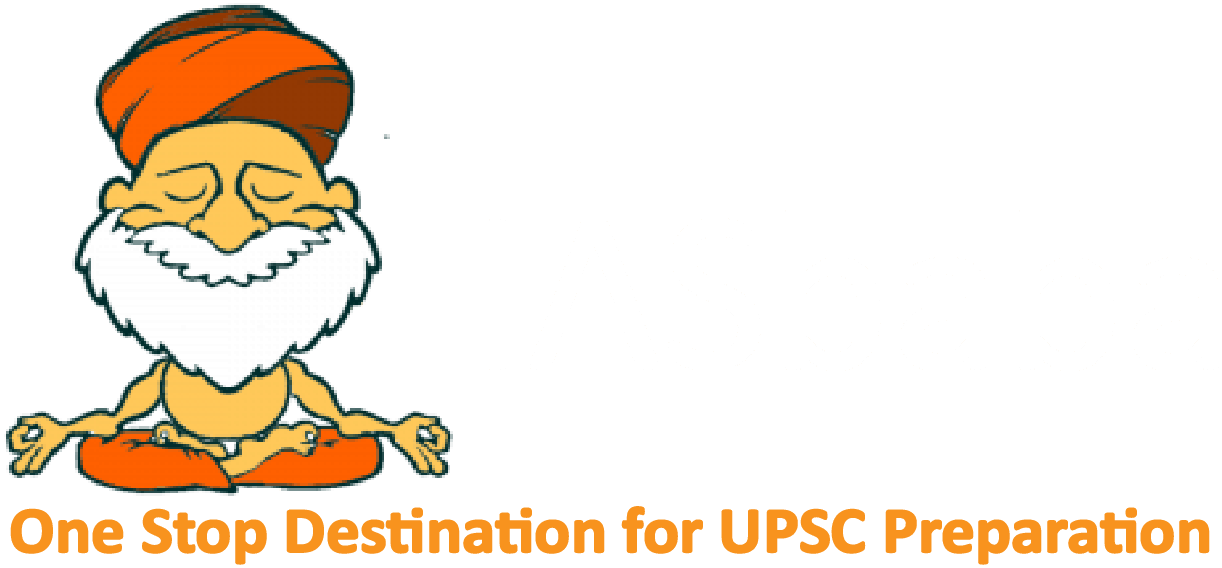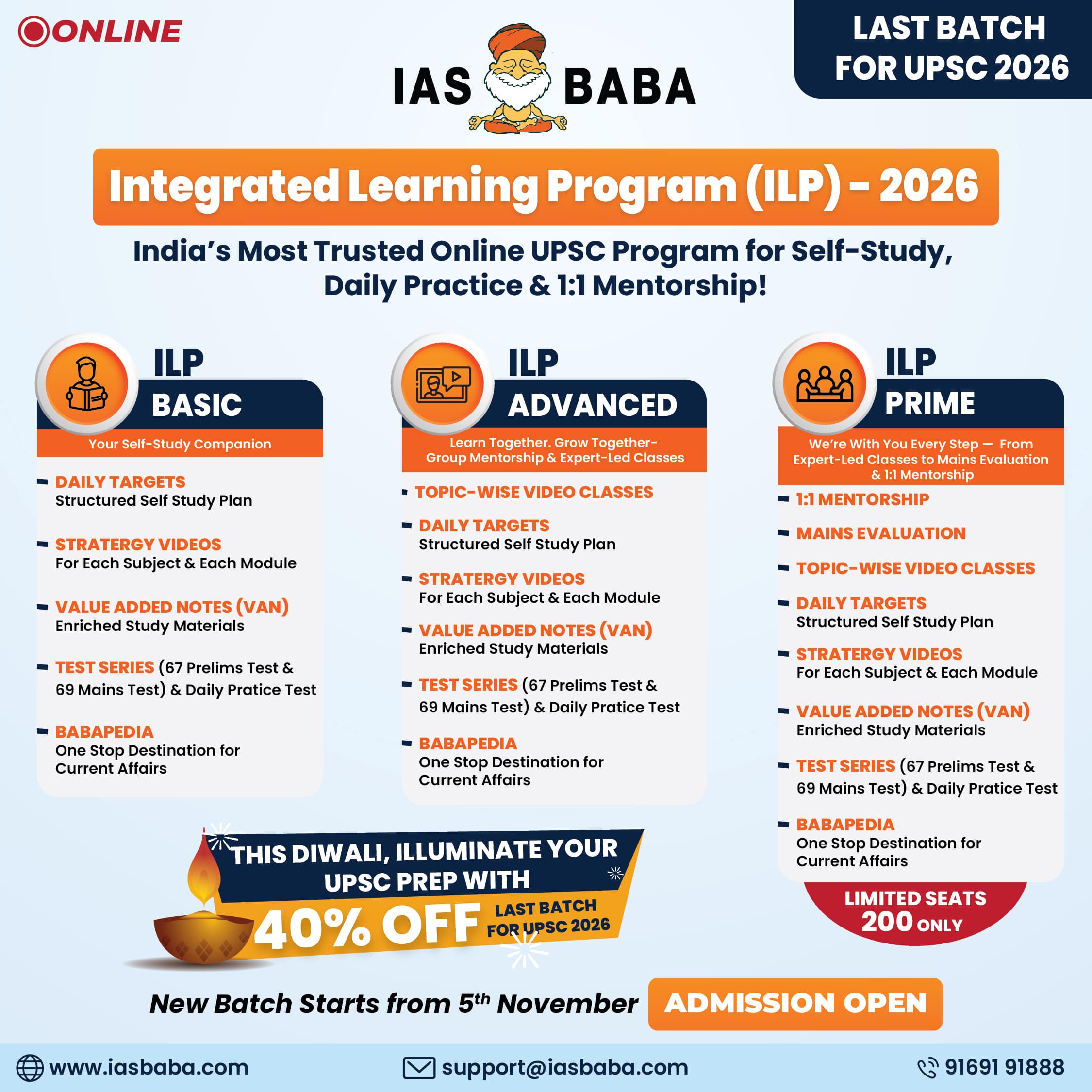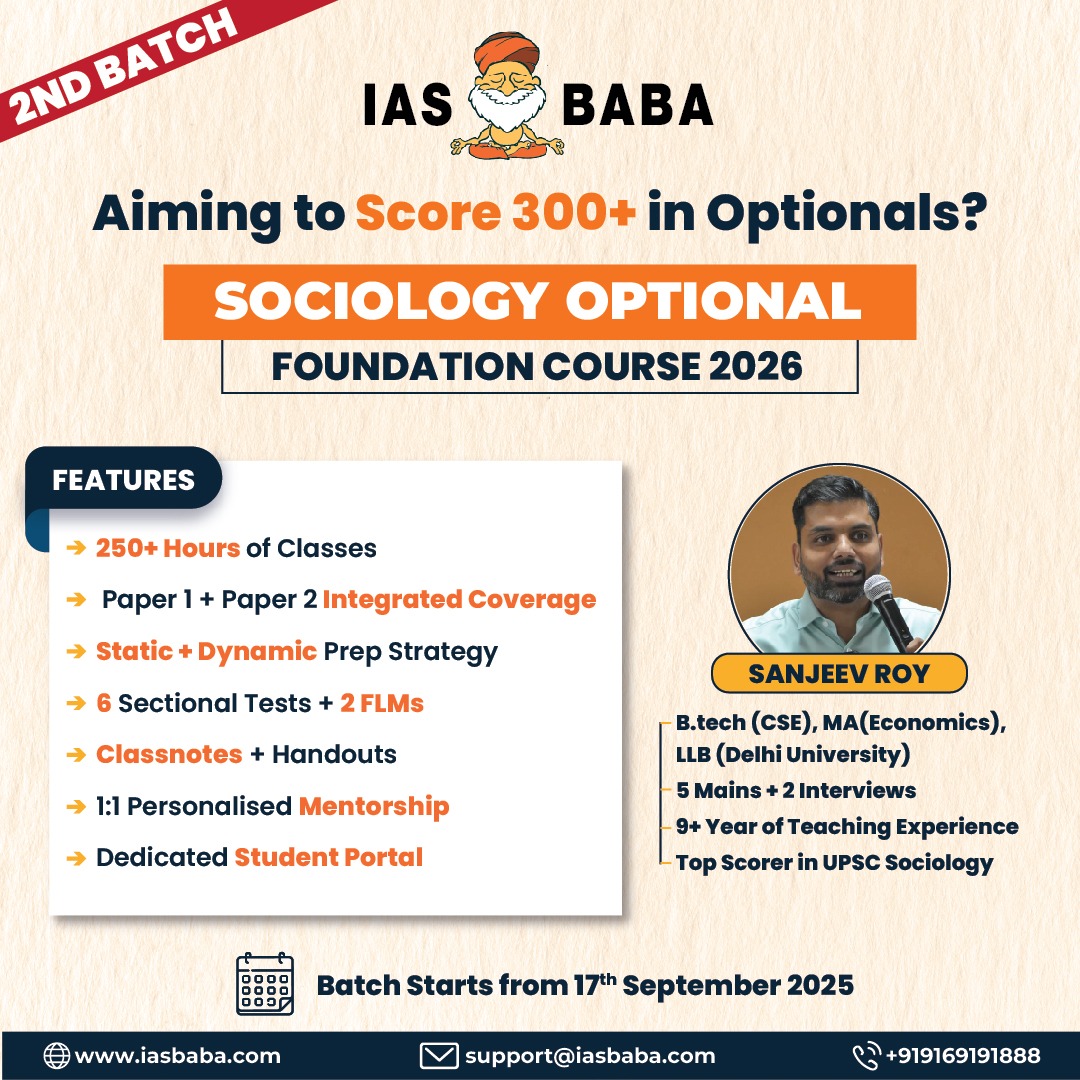IASbaba's Daily Current Affairs Analysis
rchives
(PRELIMS Focus)
Category: ENVIRONMENT
Context: Madhya Pradesh is planning to establish a second population of cheetahs by introducing a female into Gandhi Sagar Sanctuary
This follows the successful relocation of 29 cheetahs to Kuno National Park from southern Africa in 2022–23, with further imports from South Africa, Kenya, and Botswana under discussion.
Female cheetahs mature by 25–30 months, give birth around 29 months, and have a 3-month gestation with litters of up to six cubs. Mothers expend nearly double energy during cub-rearing, frequently returning to dens in bushy patches.
Gandhi Sagar presents challenges such as leopard presence and ensuring sufficient prey. Monitoring involves tracking pregnancy, prey provision, and camera traps to assess cub survival. Officials plan relocations after the monsoon for favorable conditions. Enhanced surveillance and veterinary checks aim to reduce mortality risks, as seen in earlier losses at Kuno.
This initiative seeks to create multiple self-sustaining wild cheetah populations and diversify India’s conservation strategy.
Learning Corner:
Asiatic Cheetah:
- The Asiatic cheetah (Acinonyx jubatus venaticus), once widespread in India, became extinct in the country by 1952 due to excessive hunting, habitat loss, and decline of prey species.
- Historically, cheetahs were found across Rajasthan, Gujarat, Madhya Pradesh, Uttar Pradesh, and Deccan Plateau regions.
- The Asiatic cheetah now survives only in Iran, with less than 20 individuals remaining, making it one of the most endangered big cats in the world.
- India launched Project Cheetah in 2020, aiming to reintroduce cheetahs through translocation from Namibia and South Africa.
- In September 2022, eight cheetahs from Namibia were released into Kuno National Park (Madhya Pradesh), followed by twelve more from South Africa in 2023.
- The reintroduction marks the world’s first intercontinental wild carnivore translocation project.
- Current efforts focus on creating multiple viable populations, ensuring prey availability, tackling threats from leopards, and close monitoring of breeding success.
Comparison between Indian (Asiatic) cheetah and African cheetah:
| Feature | Indian (Asiatic) Cheetah | African Cheetah |
|---|---|---|
| Scientific name | Acinonyx jubatus venaticus | Acinonyx jubatus jubatus |
| Current range | Survives only in Iran (<20 individuals) | Widespread in sub-Saharan Africa (Namibia, Botswana, South Africa, Tanzania) |
| Historic presence in India | Extinct in 1952; once found in Rajasthan, MP, Deccan Plateau, etc. | Never native to India |
| IUCN status | Critically Endangered | Vulnerable |
| Population | <20 (Iran) | ~6,500–7,000 |
| Size & Build | Smaller, slimmer, paler coat, more belly fur | Larger, more robust, darker golden coat, less belly fur |
| Habitat preference | Semi-arid grasslands, scrub forests, deserts | Open savannas, grasslands, plains |
| Genetic diversity | Very low (due to bottleneck and tiny population) | Relatively higher |
| Conservation | Extinct in India; being reintroduced through Project Cheetah | Stronger protection, stable in some regions |
| Symbolic importance | Only large mammal to go extinct in independent India | Key predator maintaining savanna ecosystem balance |
Source: THE INDIAN EXPRESS
Category: POLITY
Context : On Hindi Diwas 2025, Union Home Minister Amit Shah greeted the nation, calling India a “language-centric country.”
He described Hindi and all Indian languages as carriers of culture, history, knowledge, and traditions, and highlighted Hindi as a bridge of national unity across regions.
Key Points of His Message
- Diversity and Unity: Indian languages have historically given voice to all sections and united people during the freedom struggle.
- Role of Hindi: Evolving from a language of expression into one of technology, science, and research.
- Cultural Recognition: Literary and spiritual works from all regions enrich the nation’s heritage.
- Vision for the Future: Under PM Modi’s leadership, Indian languages are experiencing a revival through initiatives like ‘Bharatiya Bhasha Anubhav’ for easy translation and promotion in law, education, administration, and technology.
- Digital Era: Emphasis on preparing Indian languages, especially Hindi, for e-governance, AI, and global competition.
Shah’s core appeal was to respect all Indian languages and move towards a self-reliant and united India, with the message: “Let us move together, think together, and speak together.”
Learning Corner:
Official Languages Act, 1963:
- Background:
- Article 343 of the Constitution made Hindi in Devanagari script the official language of the Union.
- English was to continue for 15 years (till 1965) as an associate official language.
- Widespread protests (especially in southern states) against the exclusive adoption of Hindi led to the enactment of this Act.
- Key Provisions:
- Continued Use of English: English shall continue, along with Hindi, for official purposes of the Union and for communication between the Union and non-Hindi-speaking states, even after 1965.
- Parliamentary Proceedings: Members may address the House in Hindi or English.
- Authoritative Texts: Laws enacted in Hindi and English are considered equally authoritative.
- States’ Communication: Communication between the Union and states using Hindi as official language is in Hindi; with other states, it is in English.
- Rules and Orders: The Act empowers the President to issue rules for progressive use of Hindi and regulate official communication.
- Subsequent Amendment (1967):
- Made the use of English indefinite, ensuring it would not be discontinued without approval from states not using Hindi.
- Significance:
- Balanced national integration with linguistic diversity.
- Prevented the imposition of Hindi as the sole official language.
- Enabled smooth functioning of central administration and interstate communication.
Source: PIB
Category: CULTURE
Context: The Manki-Munda system is a centuries-old self-governance framework of the Ho adivasi community in Jharkhand’s Kolhan region.
Structure and Function
- Each village is led by a hereditary Munda, who resolves disputes and maintains order.
- A Manki oversees a cluster of 8–15 villages, handling unresolved issues.
- The system is decentralized, hereditary, and non-revenue-based, traditionally functioning without external taxation or state intervention.
British Influence
- In 1833, the British codified it under “Wilkinson’s Rules”, marking the first formal recognition of an adivasi self-governance system. This preserved some autonomy but enabled outsider entry and land changes.
Source: THE INDIAN EXPRESS
Category: ENVIRONMENT
Context : Australia has approved the world’s first vaccine to protect koalas from chlamydia, a disease causing infertility, blindness, pain, and death.
Koala Chlamydia Vaccine
Developed by the University of the Sunshine Coast after over a decade of research, it is a single-dose vaccine requiring no booster and shown to reduce mortality in wild koalas by at least 65%.
- Threat: Chlamydia infects up to 70% of some colonies in eastern Australia, making it a major cause of population decline.
- Benefits: Effective during breeding years; some studies show it may even reverse early symptoms.
- Rollout: From January, wildlife hospitals, veterinary clinics, and wild populations will be targeted, with priority to vulnerable areas. Funding challenges remain due to the labor-intensive process of vaccinating wild koalas.
- Significance: A landmark in wildlife disease control and conservation, replacing antibiotics that previously harmed koalas’ digestion and survival.
Learning Corner:
Koalas and Chlamydia
- Koalas (Phascolarctos cinereus) are marsupials native to eastern Australia, classified as endangered due to habitat loss, climate change, bushfires, and disease.
- Chlamydia infection (caused by Chlamydia pecorum) is one of the biggest threats to their survival.
- The disease spreads through sexual contact, from mother to joey during birth or nursing, and via social interaction.
- Symptoms: infertility, blindness (due to conjunctivitis), urinary tract infections, and severe pain. In advanced stages, it can cause death.
- Impact: In some colonies, infection rates reach up to 70%, significantly reducing breeding success and population growth.
- Treatment challenges: Antibiotics disrupt koalas’ gut flora, which is essential for digesting eucalyptus leaves, leading to starvation risk.
- Conservation response: Australia approved the world’s first single-dose vaccine in 2025, aiming to curb mortality and aid population recovery.
Koala (Phascolarctos cinereus)
- Classification: Marsupial native to eastern and southeastern Australia.
- Habitat: Prefers eucalyptus forests and woodlands, feeding almost exclusively on eucalyptus leaves.
- Physical Features: Grey fur, large nose, sharp claws for climbing trees, and a pouch for carrying joeys.
- Diet: Specialist folivore; highly dependent on eucalyptus leaves, which are toxic to most other animals.
- Reproduction: Breed once a year; gestation lasts about 35 days; joeys stay in the pouch for 6–7 months.
- Conservation Status: Classified as Vulnerable due to habitat loss, bushfires, disease (especially chlamydia), and climate change.
- Threats: Deforestation, vehicle collisions, dog attacks, and infectious diseases like chlamydia, which cause infertility and blindness.
- Conservation Measures: Wildlife sanctuaries, disease management, habitat restoration, and now a recently approved vaccine against chlamydia.
Source: THE HINDU
Category: ENVIRONMENT
Context: The Union Environment Ministry has approved the translocation of eight tigers from Maharashtra’s Tadoba-Andhari and Pench Tiger Reserves to the Sahyadri Tiger Reserve (STR) in the northern Western Ghats.
This is the first such effort for the region and part of a long-term tiger recovery plan.
- Sahyadri Reserve: Spread over 1,165 sq km, it combines Chandoli National Park and Koyna Wildlife Sanctuary across Kolhapur, Sangli, Satara, and Ratnagiri districts.
- Phased Relocation: Two tigresses will be moved first, followed by others. Tigers will undergo “soft release” in enclosures before being fully released.
- Ecological Role: Aims to revive a breeding population, protect forest ecosystems, safeguard Koyna and Warna river watersheds, and maintain Western Ghats’ corridor connectivity.
- Protocol: Veterinary checks, monitoring, and adherence to NTCA and WII guidelines are ensured.
- Current Status: Declared in 2010, Sahyadri has mostly transient tigers; the initiative seeks to establish a stable breeding population.
Learning Corner:
Sahyadri Tiger Reserve (STR)
- Location: Western Maharashtra, in the northern Western Ghats. Spread across Kolhapur, Sangli, Satara, and Ratnagiri districts.
- Formation: Established in 2010 by combining Chandoli National Park (317 sq km) and Koyna Wildlife Sanctuary (423 sq km).
- Total Area: About 1,165 sq km.
- Habitat: Dense evergreen and moist deciduous forests, part of the Western Ghats biodiversity hotspot.
- Fauna: Tigers (currently very few, mostly transient), leopards, wild dogs, sloth bears, sambar, gaur, and endemic reptiles/amphibians.
- Importance:
- Secures the watersheds of Koyna and Warna rivers, vital for hydroelectric projects and irrigation.
- Provides a crucial ecological corridor linking tiger habitats across Maharashtra, Goa, and Karnataka.
Source: THE INDIAN EXPRESS
(MAINS Focus)
Introduction (Context)
Rapidly increasing plastic pollution is a serious global environmental issue as it significantly impacts ecosystems, their functions, sustainable development, and ultimately the socio-economic and health dimensions of humanity.
Hence, World Environment Day (June 5), 2025 focused on “Ending Plastic Pollution” and encouraging worldwide awareness and action against it.
Present status: Data
According to the OECD’s ‘Global Plastic Outlook’:
- Global plastic consumption has surged with the rise of emerging economies and markets.
- Plastics production doubled between 2000 and 2019, reaching 460 million tonnes.
- Plastic waste generation increased to 353 million tonnes in the same period.
- Nearly two-thirds of plastic waste has a lifespan of less than five years.
- Waste composition: 40% packaging, 12% consumer goods, 11% clothing and textiles.
- Only 9% of waste is recycled; 19% incinerated; 50% landfilled.
About 22% escapes waste management systems, entering dumpsites, open burning, terrestrial and aquatic ecosystems, particularly in poorer nations.
According to the Intergovernmental Negotiating Committee on Plastic Pollution:
- In 2024 alone, 500 million tonnes of plastic were produced or used, generating around 400 million tonnes of waste.
- If the current trends continue, global plastic waste could almost triple by 2060, reaching 1.2 billion tonnes.
According to the Ocean Conservancy data:
- Each year, 11 million tonnes of plastic enter the ocean, in addition to the estimated 200 million tonnes that already flow through our marine environment.
- If the current rate of plastic production and waste generation continues, there will be more plastic in the ocean than fish by the mid-century.
Why is plastic pollution such a grave problem?
- Plastics do not break down naturally; instead, they keep breaking into very tiny pieces called microplastics and nanoplastics. These small particles spread into the soil, the air we breathe, and the water we drink making them almost impossible to remove.
- The production, use, and disposal of plastics release greenhouse gases. At present, plastics are responsible for about 3.4% of total global emissions
- By 2040 plastics alone could consume nearly one-fifth (19%) of the world’s total carbon budget, worsening climate change.
- Plastic pollution has reached every corner of the planet from Mount Everest to the deepest parts of the ocean like the Mariana Trench, showing how widespread and persistent the problem has become.
Health Impacts
- Plastics contain toxic additives: carcinogens, neurotoxicants, endocrine disruptors, that can leach from products and waste, and persist in the environment, threatening humans and ecosystems.
- Microplastics detected in human lungs, blood, placenta, and breast milk.
Evidence of reproductive harm in animals.
Global health call (2023) in which around 18 million health professionals from 88 countries urged treaty negotiators to act against plastic risks.
Remedies proposed
- In 2022, all 193 UN member states agreed to work on a legally binding agreement to end plastic pollution, which is seen as essential for protecting oceans, restoring ecosystems, achieving climate goals, and promoting sustainable consumption.
- UNEP has set an ambitious target of reducing global plastic waste by 80% within the next two decades, which requires international cooperation, new innovations, better product design, and use of eco-friendly alternatives.
- Since plastics are made mostly from petrochemicals, it is important to limit their production and immediately phase out unnecessary items, especially single-use plastics.
- Governments should strictly regulate plastic production and ensure it happens only within approved legal frameworks.
- At present, most plastics used are new (virgin) plastics, while recycled plastics make up only around 6%. Therefore, improving recycling technologies and creating profitable markets for recycled products are urgent needs.
- Policies like landfill taxes, incineration charges, deposit refund systems, and “pay-as-you-throw” models can encourage recycling and reduce careless disposal.
- Companies must be held accountable through Extended Producer Responsibility (EPR), making them responsible for collecting and recycling the plastic they produce.
- Individuals can also make a big difference by switching to greener alternatives such as cloth bags, reusable bottles, and traditional eco-friendly materials that were used in the past.
- Media campaigns and public awareness drives are crucial for changing behaviour and building a culture of responsible consumption.
Conclusion
Tackling plastic pollution requires combined efforts from governments, industries, communities, and individuals. Strong laws, better recycling, eco-friendly alternatives, and lifestyle changes can together make the vision of a world free from plastic pollution a reality.
Mains Practice Question
Q Plastic pollution is not just an environmental issue but also a public health and developmental challenge. Discuss (250 words, 15 marks)
Introduction (Context)
The Supreme Court on Monday (September 15) passed an interim order staying the operation of several provisions of the new Waqf (Amendment) Act, 2025, passed by Parliament.The court also capped the number of non-Muslims who can be appointed to the Central Waqf Council and State Waqf Boards.
Hereby, analyzing the complete issues
What is Waqf?
- Waqf is a permanent donation of property or money made by a Muslim for religious, charitable, or community purposes.
- Once given as waqf, the property cannot be sold or taken back and is managed for the benefit of society, like funding mosques, schools, or helping the poor.
What is Waqf board?
- A Waqf Board is a statutory body in India responsible for the administration, management, and protection of Waqf properties.
- Established under the Waqf Act, these boards ensure the proper utilization of Waqf assets for mosques, educational institutions, hospitals, and other social welfare initiatives.
Why was the Waqf amendment bill, 2025, proposed?
The Waqf (Amendment) Bill aims to address issues such as –
- Lack of transparency in Waqf property management
- Incomplete surveys and mutation of Waqf land records
- Insufficient provisions for women’s inheritance rights
- Large number of prolonged litigations including encroachment. In 2013, there were 10,381 pending cases which have now increased to 21,618 cases.
- Irrational power of the Waqf Boards in declaring any property as waqf land based on their own inquiry.
- Large number of disputes related to government land declared as aqf.
- Lack of proper accounting and auditing of Waqf properties.
- Administrative inefficiencies in waqf management.
- Improper treatment to Trust properties.
- Inadequate representation of stakeholders in Central Waqf Council and State Waqf Boards.
Salient provisions of Waqf Act, 2025
The Waqf (Amendment) Bill, 2025 introduces several changes to the Waqf Act, 1995, aiming for improved governance, transparency, and inclusivity in Waqf management. Below are the key differences:
| Category | Waqf Act, 1995 | Waqf Amendment Bill, 2025 |
| Name of the Act | The Waqf Act, 1995 | Renamed Unified Waqf Management, Empowerment, Efficiency, and Development Act, 1995 |
| Formation of Waqf | Allowed by declaration, user, or endowment (Waqf-alal-aulad) | Removes Waqf by user; only declaration or endowment allowed. Donors must be practicing Muslims for 5+ years. Cannot deny female inheritance. |
| Government Property as Waqf | No clear provision | Government properties identified as Waqf cease to be Waqf. Disputes resolved by the Collector, who reports to the state. |
| Power to Determine Waqf | Waqf Board had authority | Provision removed. |
| Survey of Waqf | Conducted by Survey Commissioners and Additional Commissioners | Collectors empowered to conduct surveys as per state revenue laws. |
| Central Waqf Council | All members had to be Muslims, including two women | Includes two non-Muslims; MPs, former judges, and eminent persons need not be Muslims. The following members must be Muslims: Representatives of Muslim organisations, Scholars in Islamic law, Chairpersons of Waqf Boards. Of the Muslim members, two members must be women.
|
| State Waqf Boards | Up to two elected Muslim MPs/MLAs/Bar Council members; at least two women | State government nominates members, including two non-Muslims, one each from Shia, Sunni, Backward-class Muslims, Bohra, and Agakhani. At least two Muslim women required. |
| Tribunal Composition | Led by a judge, included Additional District Magistrate & Muslim law expert | Muslim law expert removed; includes District Court judge (chairman) and a joint secretary (state government). |
| Appeal on Tribunal Orders | High Court intervention only under special circumstances | Appeals allowed to High Court within 90 days. |
| Powers of Central Government | State governments could audit Waqf accounts anytime | Central Government empowered to make rules on Waqf registration, accounts, and audits (CAG/ designated officer). |
| Separate Waqf Boards for Sects | Separate boards for Shia & Sunni (if Shia Waqf >15%) | Also allows Bohra & Agakhani Waqf boards. |
Source: PIB
Challenge to the Waqf Act
A host of petitioners challenged the law, arguing that it interfered with the fundamental right of the Muslim community to manage its own religious affairs, guaranteed under Article 26 of the Constitution.
The Constitution’s Article 13(2) clearly says that only the provisions that contravene fundamental rights are void.
Based on this, CJI B R Gavai and Justice AG Masih’s bench stayed a few provisions of the Act.
Supreme Court order
- Powers of the District Collector:
- Provision: Section 3C gave District Collectors (or designated officers) power to check if a property claimed as Waqf was actually government property.
Issue: Property would immediately stop being treated as Waqf the moment inquiry started, even before final decision. Officers could also directly change revenue and Waqf board records. - Supreme Court Stay: Property will continue to be treated as Waqf during inquiry. Officers cannot directly alter records. Waqfs won’t be dispossessed, but no new third-party rights can be created until Waqf Tribunal decides.
- Provision: Section 3C gave District Collectors (or designated officers) power to check if a property claimed as Waqf was actually government property.
- Inclusion of non-Muslims in Waqf boards
- Provision: Inclusion of non-Muslims in Waqf Boards and the Central Waqf Council.
Issue: Petitioners argued it could allow a non-Muslim majority, violating the right of Muslims to manage their own religious affairs. - Supreme Court Stay: Limited number of non-Muslim members not more than 4 in the Central Waqf Council (22 members) and not more than 3 in State Waqf Boards (11 members).
- Provision: Inclusion of non-Muslims in Waqf Boards and the Central Waqf Council.
- The ‘practising Islam for 5 years’ rule
- Provision: New definition of Waqf only a person practising Islam for at least five years could create Waqf.
- Issue: Petitioners said this was discriminatory and arbitrary.
- Supreme Court Stay: Rule stayed for now, but stay is conditional, government must frame clear rules on how the five-year practice will be verified.
- Provisions not stayed by the Court
- Abolition of “Waqf by use” — Earlier, land used for Muslim religious or charitable purposes over time could be treated as Waqf even without registration. The government argued this was being misused. The court did not stay this change. The Court found the abolition of such a waqf perfectly justified on the ground that a lot of government lands have been encroached upon.
- Application of the Limitation Act — Earlier, Waqf Boards could act against encroachment at any time. Now, they must act within legal time limits. The court did not stay this change, calling it removal of earlier discrimination.
Conclusion
The Waqf (Amendment) Act, 2025 seeks to bring greater transparency, accountability, and inclusivity in the management of Waqf properties. While its provisions aim at curbing misuse, protecting women’s rights, and modernising administration, several changes—such as the role of revenue officers, inclusion of non-Muslims, and restrictions on who can create a Waqf—raise significant constitutional and religious freedom concerns. The Supreme Court’s interim stay on contentious provisions reflects the delicate balance between reform, minority rights, and constitutional principles.
Mains Practice Question
Q The Waqf (Amendment) Act, 2025 has sparked debates on transparency, minority rights, and constitutional principles. Critically analyse (250 words, 15 marks)














